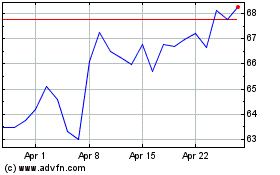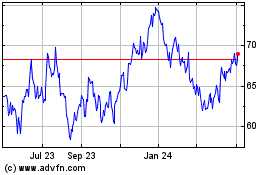Australia’s two largest iron ore miners and its biggest
steelmaker have selected the Kwinana Industrial Area, south of
Perth, as the location to develop Australia’s largest ironmaking
electric smelting furnace1 (ESF) pilot plant.
The groundbreaking project combines the expertise of BlueScope,
BHP and Rio Tinto to test technology to enable the use of Pilbara
iron ore to produce iron without the need for traditional blast
furnaces, as the companies come together to try to accelerate the
decarbonisation of steelmaking.
The industry leaders formed the NeoSmelt collaboration in
February, combining BHP and Rio Tinto’s deep knowledge of Pilbara
iron ore, with BlueScope’s unique operating experience in ESF
technology.
The NeoSmelt parties also announce Woodside Energy will join the
consortium as an equal equity participant and energy supplier2,
subject to finalising commercial arrangements.
The pilot plant aims to prove Pilbara iron ore can be used to
produce lower-carbon3 emissions molten iron using direct reduced
iron (DRI)-ESF technology.
The pilot plant would produce 30,000 to 40,000 tonnes of molten
iron a year. It will initially use natural gas to reduce iron ore
to DRI, but once operational, the project aims to use lower-carbon
emissions hydrogen to reduce iron ore.
If successful, NeoSmelt has the potential to open a pathway to
near-zero emissions4 steelmaking using Pilbara iron ore and ensure
the longevity of Australia's iron ore industry.
The NeoSmelt parties assessed a number of pilot plant locations
in Australia before selecting the Kwinana Industrial Area,
utilising its access to transport logistics and existing
infrastructure, coupled with support from a A$75 million
contribution from the Western Australian Government.
Subject to funding, the project anticipates a decision to enter
feasibility studies in Q2 2025 and is targeting final investment
decision (FID) for the pilot plant in 2026, with operations
expected to begin in 2028.
The NeoSmelt project remains open for collaboration with other
parties that complement its objectives.
Western Australian Premier Roger Cook said: “Under my WA Labor
Government, our State is becoming a global renewable energy
powerhouse – creating the jobs of the future and setting up our
economy for the long term.
“Securing NeoSmelt for Kwinana positions WA at the cutting edge
of the global push to slash emissions from steel production – and
means our Pilbara iron ore will be processed right here in WA.
“Putting the global steel industry on the pathway to near-zero
emissions means more jobs in processing in WA, and a strong future
for WA’s iron ore industry.”
BlueScope Chief Executive Australia, Tania Archibald said:
“Today marks a significant milestone in what is truly a unique and
transformative project to help decarbonise the steel industry. The
progress made during the pre-feasibility stage is a testament to
the collaboration of all parties involved.
“BlueScope’s role as Project Manager leverages our deep iron and
steelmaking experience at the Port Kembla Steelworks and our unique
capability as the operator of the world’s only electric smelting
furnace processing DRI in New Zealand.”
BHP Western Australia Iron Ore (WAIO) Asset President, Tim Day
said: “We're thrilled to be well on our way to bringing this
cutting-edge technology to life right here in Western
Australia.
“A successful pilot plant of this scale would be a huge
achievement as we work with our partners, here and around the
world, to help fast-track near-zero emission pathways for
steelmakers using Pilbara ores.
“These are the Pilbara ores that power this nation's economy, so
getting it right would be a major step forward in setting up WA and
Australia to be an important part of a low greenhouse gas emission
future.”
Rio Tinto Iron Ore Chief Executive, Simon Trott said: “We must
find better ways to produce the most commonly used metal in the
world, while meeting the needs of our planet and our climate
objectives.
“We are excited to announce the location for Australia’s largest
ironmaking ESF pilot plant is in Western Australia. It’s just one
of the ways we’re working with our peers to develop the technology
needed to reduce the carbon intensity of iron and steelmaking.
“The NeoSmelt pilot plant builds on the suite of projects Rio
Tinto has underway with our customers and suppliers to find better
ways to accelerate their efforts to meet their decarbonisation
targets.”
Woodside Energy’s Executive Vice President & Chief Operating
Officer Australia, Liz Westcott said: “Woodside is excited that it
will join the NeoSmelt project as an equal equity participant and
energy supplier alongside BlueScope, BHP and Rio Tinto, subject to
finalising commercial arrangements.
“Natural gas and hydrogen may enable emissions reductions in
steelmaking, and we are proud to bring to the NeoSmelt project our
expertise, experience and know-how as a global supplier of
energy.
“Woodside supports the NeoSmelt project’s goals of exploring
lower-emissions steelmaking pathways for Pilbara iron ore and
unlocking new skills and capabilities through the energy
transition.
Federal Resources Minister and Member for Brand, Madeleine King
said: “Kwinana was built in the 1950s to power Western Australia
and under the Cook and Albanese Governments it will remain the
engine room of this State for generations to come.
“This is a significant project for Kwinana that will create many
highly skilled and well-paid jobs to build our national
capability.
“Under the Albanese Government’s Future Made in Australia
agenda, the State and Federal Government are working together to
make best use of our natural advantages, to process more of what we
mine here, to secure our sovereign capability and to power the
world’s energy transition.”
Notes to editors
Pilot Electric Smelting Facility
The NeoSmelt pilot plant is intended to test and optimise
production of iron from the electric smelting furnace (ESF), a type
of furnace being developed by leading steel producers and
technology companies targeting low CO2 emission-intensity steel.
The ESF is capable of producing iron suitable for the basic oxygen
steelmaking process. Iron ore is first converted to direct reduced
iron (DRI) before being charged into the ESF. Together, the DRI-ESF
equipment can replace the traditional blast furnace. Estimates show
reductions of up to 80^ per cent in CO2 emission intensity are
potentially achievable processing Pilbara iron ore through a
DRI-ESF pathway, compared with the current industry average for the
conventional blast furnace steel route.
Other lower CO2 emission-intensity production routes, such as
electric arc furnaces, require scrap steel and DRI produced from
high grade iron ore. The ESF allows for greater flexibility in
input raw materials, addressing one of the key barriers to wider
adoption of lower-carbon emissions technology. The ESF also has the
potential to be integrated into a steel plant’s existing downstream
production units.
1 Also known in the industry as an “electric melter”. 2 Energy
supply may include hydrogen, natural gas and electricity. 3 Lower
carbon has the characteristic of having lower levels of associated
potential greenhouse gas emissions when compared to historical
and/or current conventions or analogues, for example relating to an
otherwise similar resource, process, production facility, product
or service, or activity. 4 Although there is no standardised
universal definition of near-zero emissions, the IEA has defined it
as 0.40 tonnes of CO2-e per tonne of crude steel for 100 per cent
ore-based production (no scrap). ^ Assumes utilisation of renewable
energy to power the DRI-ESF facility and zero emissions hydrogen in
the DRI plant. The remaining CO2 emissions are from carbon required
in the process of making liquid iron suitable for the basic oxygen
steelmaking process.
View source
version on businesswire.com: https://www.businesswire.com/news/home/20241216818510/en/
BlueScope Michael Reay M +61 437 862 472 E
michael.reay@bluescope.com
BHP Jimmy Clothier M +61 413 391 031 E
jimmy.clothier@bhp.com
Rio Tinto Rachel Pupazzoni M +61 438 875 469 E
rachel.pupazzoni@riotinto.com
Woodside Energy Christine Forster M +61 484 112 469 E
christine.forster@woodside.com
WA Premier’s office Mark Scott M +61 437 170 385 E
mark.scott@dpc.wa.gov.au
Madeleine King’s office Nick Butterly M +61 499 947 024 E
nick.butterly@industry.gov.au
Rio Tinto (NYSE:RIO)
Historical Stock Chart
From Dec 2024 to Jan 2025

Rio Tinto (NYSE:RIO)
Historical Stock Chart
From Jan 2024 to Jan 2025
